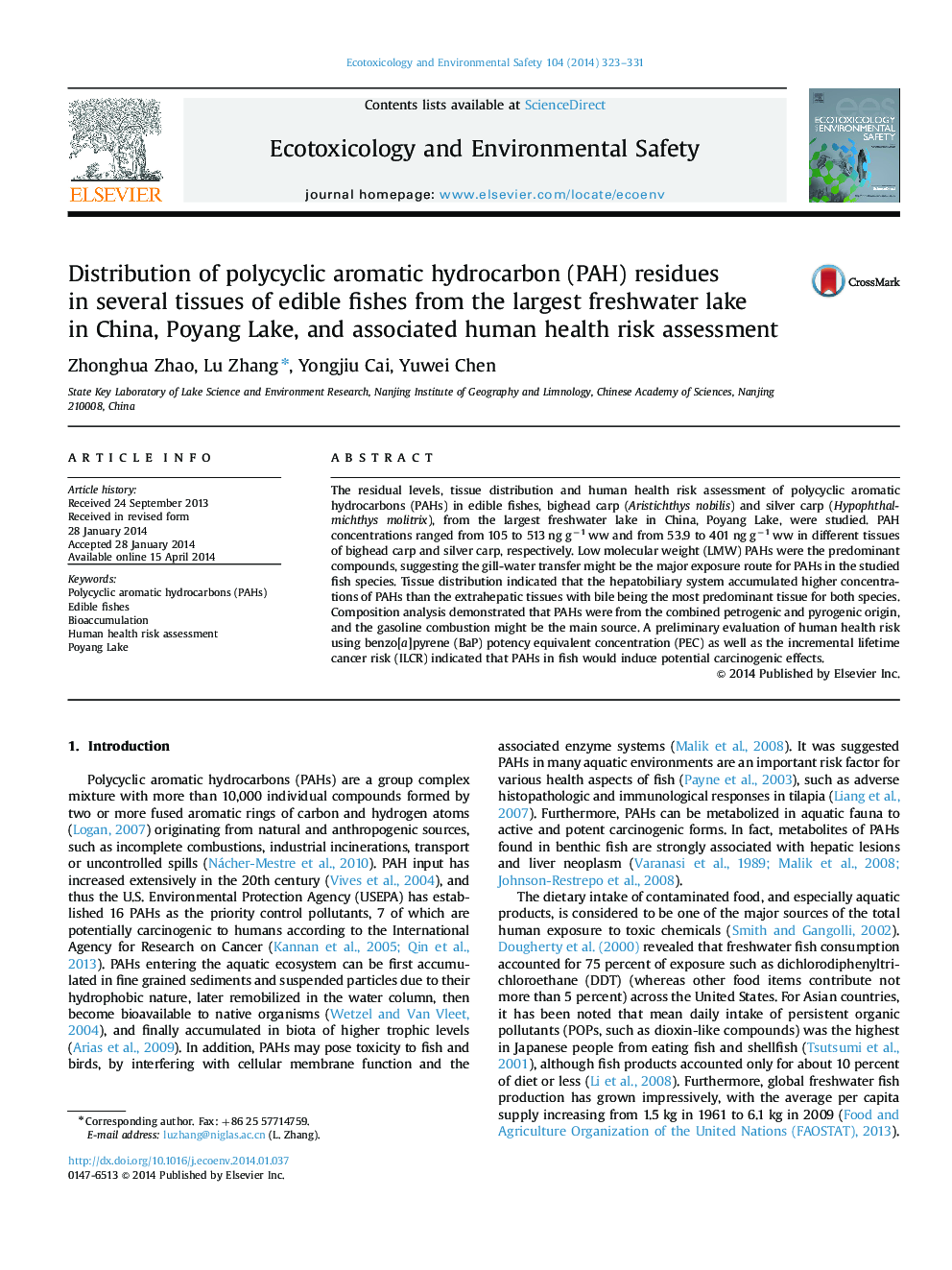| کد مقاله | کد نشریه | سال انتشار | مقاله انگلیسی | نسخه تمام متن |
|---|---|---|---|---|
| 4420164 | 1618959 | 2014 | 9 صفحه PDF | دانلود رایگان |

• PAHs ranged from 104.77 to 512.83 ng g−1 ww and from 53.87 to 400.91 ng g−1 ww in tissues of bighead carp and silver carp, respectively.
• The gill-water transfer might be the major exposure route of PAHs to fish.
• The hepatobiliary system accumulates higher concentrations of PAHs than the rest tissues.
• PAHs were from the combined origin of petrogenic and pyrogenic processes.
• PAHs would induce potential carcinogenic risk on human health through fish dietary intake around Poyang Lake.
The residual levels, tissue distribution and human health risk assessment of polycyclic aromatic hydrocarbons (PAHs) in edible fishes, bighead carp (Aristichthys nobilis) and silver carp (Hypophthalmichthys molitrix), from the largest freshwater lake in China, Poyang Lake, were studied. PAH concentrations ranged from 105 to 513 ng g−1 ww and from 53.9 to 401 ng g−1 ww in different tissues of bighead carp and silver carp, respectively. Low molecular weight (LMW) PAHs were the predominant compounds, suggesting the gill-water transfer might be the major exposure route for PAHs in the studied fish species. Tissue distribution indicated that the hepatobiliary system accumulated higher concentrations of PAHs than the extrahepatic tissues with bile being the most predominant tissue for both species. Composition analysis demonstrated that PAHs were from the combined petrogenic and pyrogenic origin, and the gasoline combustion might be the main source. A preliminary evaluation of human health risk using benzo[a]pyrene (BaP) potency equivalent concentration (PEC) as well as the incremental lifetime cancer risk (ILCR) indicated that PAHs in fish would induce potential carcinogenic effects.
Journal: Ecotoxicology and Environmental Safety - Volume 104, June 2014, Pages 323–331